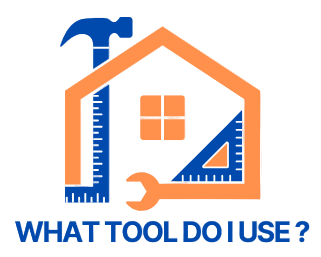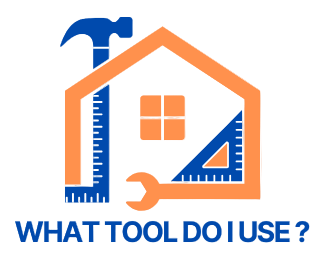Quick summary: 🛠 Start with a core toolkit that covers measuring, cutting, fastening, and safety. Choose quality over quantity, learn basic care routines, and build confidence with each small project.
Every beginner DIYer only needs a handful of essential tools: a tape measure, spirit level, hammer, screwdriver set, hand saw, and a cordless drill. Learn what each tool does, how to use it safely, and how to look after your kit so it lasts for years. 🧰
🔑 Understanding Your First DIY Tool Kit
Building your first toolkit is about confidence, not quantity. With just a few versatile hand and power tools, you can complete most home projects safely and efficiently. This guide explains what to buy, how to use each item, and how to maintain them properly. 🏡
Why Start with a Core DIY Toolset?
Before jumping into the list, it helps to understand why a foundational toolset matters. With the right basics, you’re not just fixing things: you’re learning valuable skills and saving money along the way.
Avoid Overbuying Tools You Don’t Need
Many beginners overspend on gear they rarely use. Focus on versatile tools that work across common DIY projects: measuring, cutting, fastening, and safety.
The 12 Essential DIY Tools for Beginners
Now let’s break down the 12 essential DIY tools every beginner should own, grouped by category for clarity.
Measuring and Marking Tools
1. Tape Measure (at least 5 metres)
A solid tape measure locks easily and has clear metric and imperial markings.
- Common uses: Measuring furniture space, wall lengths, or wood cuts.
- Beginner tip: Learn to use the hook and internal measurements for inside corners.
2. Spirit Level (bubble level)
Stop shelves and frames from going wonky by levelling during marking and fixing.
- Common uses: Hanging pictures, aligning furniture, marking straight lines.
- Beginner tip: A 600 mm level is a great all-round size.
Cutting Tools
3. Utility Knife (retractable)
Perfect for cardboard, plasterboard, plastic, and trimming materials.
- Common uses: Opening boxes, trimming, scoring plasterboard.
- Beginner tip: Replace dull blades early — blunt blades are more dangerous.
4. Hand Saw (general purpose)
Choose a universal hand saw that cuts on push and pull strokes.
- Common uses: Shelves, small timber lengths, plastic pipes.
- Beginner tip: Slow, steady strokes produce straighter cuts.
Fastening & Assembly Tools
5. Screwdriver Set (flathead and Phillips)
Manual drivers give control for delicate tasks.
- Common uses: Flat-pack furniture, cabinets, fixtures.
- Beginner tip: Magnetic tips help in tight spaces.
6. Hammer (claw hammer)
Drive nails, pull them out, or tap timber into place.
- Common uses: Hanging pictures, assembling furniture, light demolition.
- Beginner tip: Hold near the end of the handle for control and power.
7. Adjustable Spanner (wrench)
Handy for plumbing, flat-pack bolts, and bike adjustments.
- Common uses: Tap fittings, metal furniture, bicycles.
- Beginner tip: Keep the jaws snug to avoid rounding bolt heads.
Power Tools (just one to start)

8. Cordless Drill (with multiple bits)
This single tool can drill holes and drive screws: the two most common DIY jobs. Need help choosing?
Start here: Your complete drill guide and Which drill bit do I use?
- Common uses: Hanging shelves, assembling furniture, drilling pilot holes.
- Beginner tip: Switch torque settings to avoid over-driving screws.
Safety Equipment

9. Safety Glasses
Protect your eyes from flying debris when sawing, drilling, or hammering.
10. Work Gloves (flexible grip)
Prevent splinters, protect against sharp edges, and improve grip.
Beginner tip: Choose gloves with good tactile feel.
Organisation & Layout
11. Tool Box or Tool Bag
Keep tools together and easy to carry.
Beginner tip: Use labelled compartments for screws and wall plugs.
12. Pencil & Notepad
Quick measurements, sketches, and step planning start here.
How to Use These Essential DIY Tools for Beginners
Start with simple projects
- Put up shelves or coat hooks
- Repair a loose table leg
- Replace handles on kitchen cabinets
- Build a small planter box
These tasks build measurement, fastening, drilling, and safety habits using your core toolset.
Learn tool care basics
- Wipe tools clean after use to prevent rust or wear
- Store them dry to avoid corrosion
- Charge batteries regularly for cordless tools
- Sharpen blades and replace when needed (especially utility knives)
More on care and storage: How to Maintain and Store DIY Tools
Common Mistakes Beginners Should Avoid
Mistake #1: Using the wrong tool for the job
Hammering a screw or cutting wood with a utility knife risks poor results and injury.
Mistake #2: Skipping safety gear
Safety glasses and gloves prevent common injuries and build good habits.
Mistake #3: Measuring just once
Always measure twice to avoid waste and rework.
More safety pointers: Common DIY Tool Safety Mistakes
Quick Recap: 12 Essential DIY Tools for Beginners
- Tape Measure
- Spirit Level
- Utility Knife
- Hand Saw
- Screwdriver Set
- Claw Hammer
- Adjustable Spanner
- Cordless Drill/Driver
- Safety Glasses
- Work Gloves
- Tool Box
- Pencil & Notepad
📚 Read Next
- 🦺 Beginner’s Guide to DIY Tool Safety
- 🔩 How to Use a Power Drill Safely & Effectively
- 🪵 How to Sand Wood by Hand (Beginner Guide)
- 🧰 How to Maintain and Store DIY Tools
- ⚠️ Common DIY Tool Safety Mistakes and How to Avoid Them
🛠 Recommended Essential DIY Tools for Beginners
🔒 Affiliate links: This post may include affiliate links, meaning I may earn a small commission if you buy through them — at no extra cost to you. I only recommend tools I trust and use myself.
🔗 Recommended: RYOBI 18V ONE+ Cordless Combi Drill Starter Kit
Reliable first drill/driver for beginners — includes two batteries for all-day DIY.
View Product🔗 Recommended: BLOSTM 42-Piece Magnetic Screwdriver Set
Comprehensive set for everyday DIY — magnetic tips and a tough carry case.
View Product🔗 Recommended: OX Premium Trade Spirit Level
High-accuracy level ideal for shelving, picture frames and straight installations.
View Product🔗 Recommended: STANLEY FATMAX 8m/26' Tape Measure
Tough, accurate tape with a long standout and magnetic hook for solo measuring.
View Product🔗 Recommended: Bahco 3-Piece Adjustable Wrench Set
Premium spanners covering common DIY sizes — ideal for plumbing & assembly work.
View Product🔗 Recommended: STANLEY 20oz Curved Claw Hammer
High-carbon steel head with anti-vibration fibreglass handle for safer striking.
View Product🔗 Recommended: Amazon Basics Heavy-Duty Utility Knife
Retractable, ergonomic knife with auto-load blade system — ideal for trimming & scoring.
View Product🔗 Recommended: STANLEY 3-in-1 Rolling Workshop Toolbox
Stackable rolling tool storage — perfect for organising your growing DIY toolkit.
View Product






